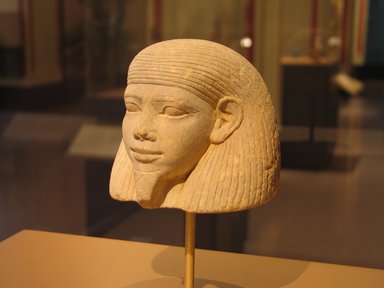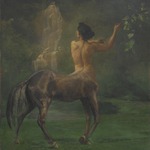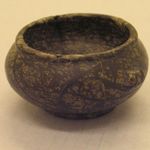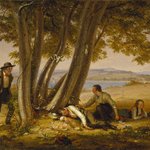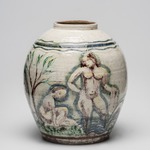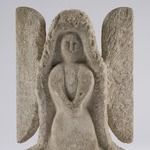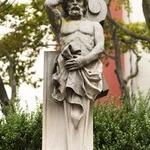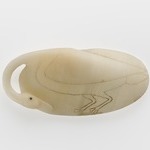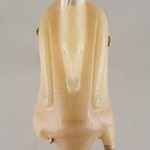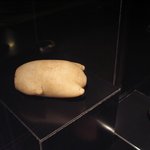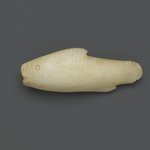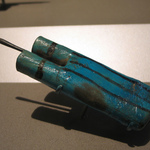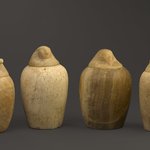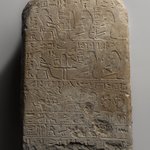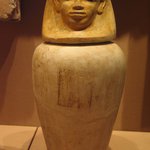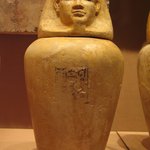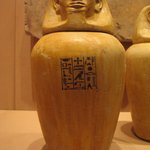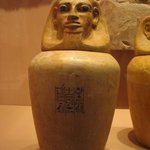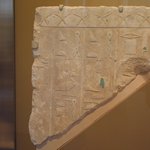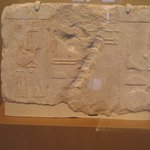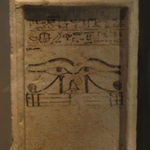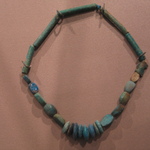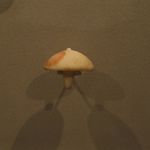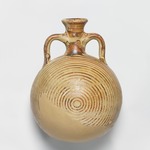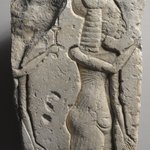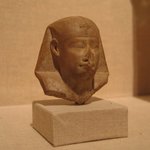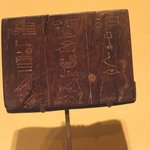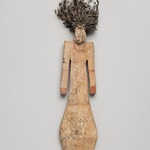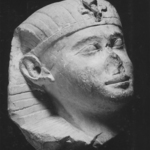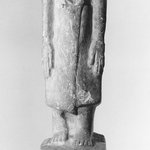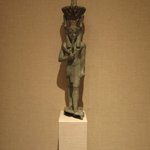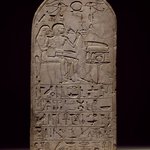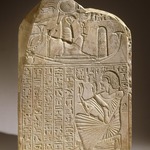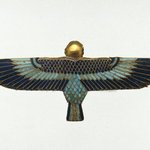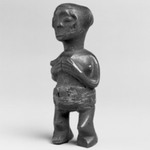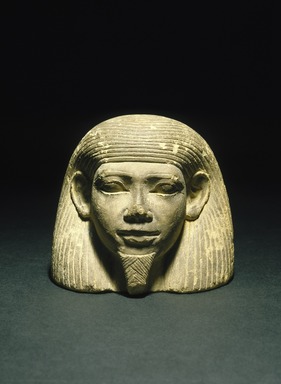
Jar Lid with Human Face
Egyptian, Classical, Ancient Near Eastern Art
On View: Old Kingdom to 18th Dynasty, Egyptian Galleries, 3rd Floor
The absence of any trace of shoulders indicates that this limestone head was never part of a complete sculpture. It probably served as the lid of a canopic jar, a vessel containing a corpse’s vital organs that were removed during mummification. The artist who carved this face followed the dominant style of mid-Twelfth Dynasty, including full, fleshy cheeks, wide open eyes with a high, arcing upper lid, and an overall sense of serenity.
MEDIUM
Limestone
DATES
ca. 1876–1837 B.C.E.
DYNASTY
middle Dynasty 12
PERIOD
Middle Kingdom
DIMENSIONS
4 × 4 7/16 × 4 1/16 in. (10.2 × 11.2 × 10.3 cm) (show scale)



COLLECTIONS
Egyptian, Classical, Ancient Near Eastern Art
ACCESSION NUMBER
87.78
CREDIT LINE
Purchased with funds given by Christos G. Bastis and Charles Edwin Wilbour Fund
CATALOGUE DESCRIPTION
Limestone head, almost certainly the lid of a vessel, wearing vertically striated wig and plaited beard; square face with full fleshy cheeks, and large ears; thick, horizontal eyebrows descending obliquely across temples; rimmed eyes with deeply carved inner canthi and flaring cosmetic lines extending from outer canthi; upper lids rise in great arcs; lower lids are straight; straight nose (tip gone) with drilled rounded nostrils, shallow fold rising from each nasal ala and extending to a point parallel to bottom of nose; extremely shallow philtrum; mouth wide and straight; lips sharply modeled; end of beard gone.
Condition: Entire surface of head chipped and abraded; most severe damage on back; facial damage includes chips on both eyebrows and lids of both eyes; ears, right cheek, end of nose, and lower lip; left cheek abraded. Bottom of head flat.
EXHIBITIONS
MUSEUM LOCATION
This item is on view in Old Kingdom to 18th Dynasty, Egyptian Galleries, 3rd Floor
CAPTION
Jar Lid with Human Face, ca. 1876–1837 B.C.E. Limestone, 4 × 4 7/16 × 4 1/16 in. (10.2 × 11.2 × 10.3 cm). Brooklyn Museum, Purchased with funds given by Christos G. Bastis and Charles Edwin Wilbour Fund, 87.78. Creative Commons-BY (Photo: Brooklyn Museum, 87.78_SL1.jpg)
IMAGE
overall, 87.78_SL1.jpg. Brooklyn Museum photograph
"CUR" at the beginning of an image file name means that the image was created by a curatorial staff member. These study images may be digital point-and-shoot photographs, when we don\'t yet have high-quality studio photography, or they may be scans of older negatives, slides, or photographic prints, providing historical documentation of the object.
RIGHTS STATEMENT
Creative Commons-BY
You may download and use Brooklyn Museum images of this three-dimensional work in accordance with a Creative Commons license. Fair use, as understood under the United States Copyright Act, may also apply.
Please include caption information from this page and credit the Brooklyn Museum. If you need a high resolution file, please fill out our online application form (charges apply).
For further information about copyright, we recommend resources at the United States Library of Congress, Cornell University, Copyright and Cultural Institutions: Guidelines for U.S. Libraries, Archives, and Museums, and Copyright Watch.
For more information about the Museum's rights project, including how rights types are assigned, please see our blog posts on copyright.
If you have any information regarding this work and rights to it, please contact copyright@brooklynmuseum.org.
RECORD COMPLETENESS
Not every record you will find here is complete. More information is available for some works than for others, and some entries have been updated more recently. Records are frequently reviewed and revised, and we welcome any additional information you might have.
